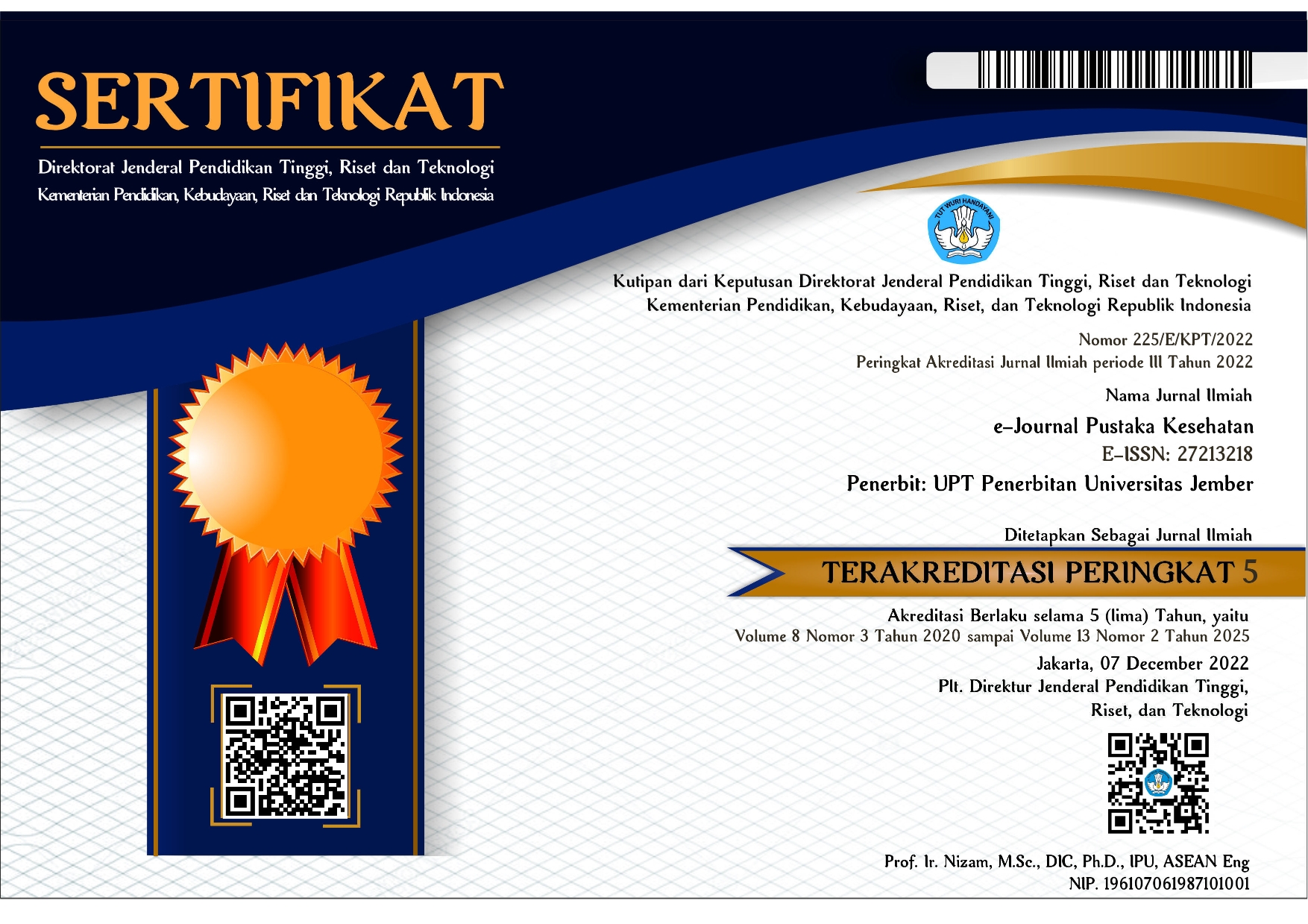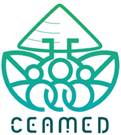Perbedaan OHI-S DMF-T dan def-t Pada Siswa Sekolah Dasar Berdasarkan Letak Geografis Di Kabupaten Situbondo (Difference Of OHI-S And DMF-T On Elementary School Students Based On Geographical Location In Situbondo)
Abstract
Background the level of dental health and a person's mouth can be seen on high and low scores OHI-S, DMFT and def-t. OHI-S (Oral Hygiene Index Simplified) is an idea of the level of cleanliness of teeth and the mouth of a person. DMF-T index is a measurement of permanent tooth caries and def-t in first gear.  Health Profile Data Situbondo in 2010 shows thepercentage of caries rate 77,37% in the ages of pre school and primary school students (primary school), it can be influenced by one's situation and environmental conditions such as geographical location. The purpose of this research is to know the difference in OHI-S, DMF-T and def-t on elementary school students based on geographical location in Situbondo that coastal areas, lowlands and the hills. This research is research observational analytic with cross sectional approach methods and techniques of sampling this research is purposive sampling so as to get the number of samples of the 450 students. At each of the elementary schools in three districts will be examination of OHI-S, DMF-T and def-t to specify OHI-S index, DMF-T and-t def. Data analysis using different test Kruskal-Wallis and Mann-Whitney. The results of this research show that the value of OHI-S students in coastal areas that is 49% better than any other area. The average DMF-T students in coastal areas 0,56; lowlands 0,97 and the hills 1,20. Average def-t in coastal areas 1,20; lowlands 1,61 and the hills 1,32. The conclusion is no difference in the value of OHI-S and DMF-T while the value of the def-t there is no distinction. The advice is need for further research based on the classification of age so that the average difference is seen more clearly visible.
Â
Keywords::def-t, DMF-T, Elementary School, Geographical location, OHI-S.
Â
Downloads
Downloads
Published
Issue
Section
License
e-Journal Pustaka Kesehatan has CC-BY-SA or an equivalent license as the optimal license for the publication, distribution, use, and reuse of scholarly work. Authors who publish with this journal retain copyright and grant the journal right of first publication with the work simultaneously licensed under a Creative Commons Attribution-ShareAlike 4.0 International License that allows others to share the work with an acknowledgment of the work's authorship and initial publication in this journal.







